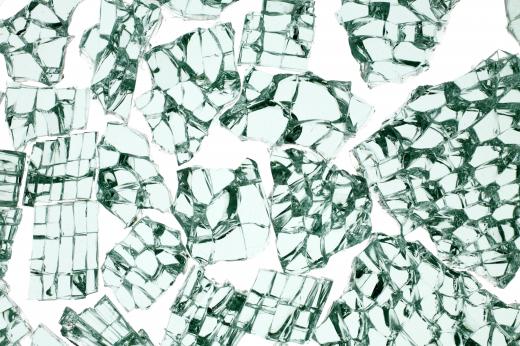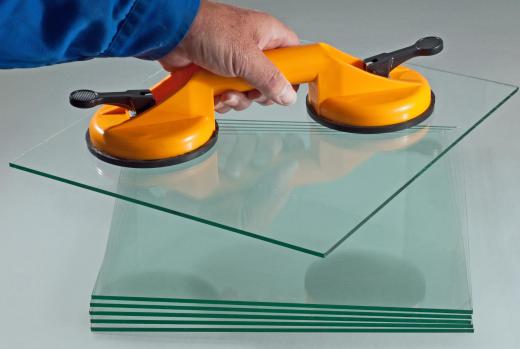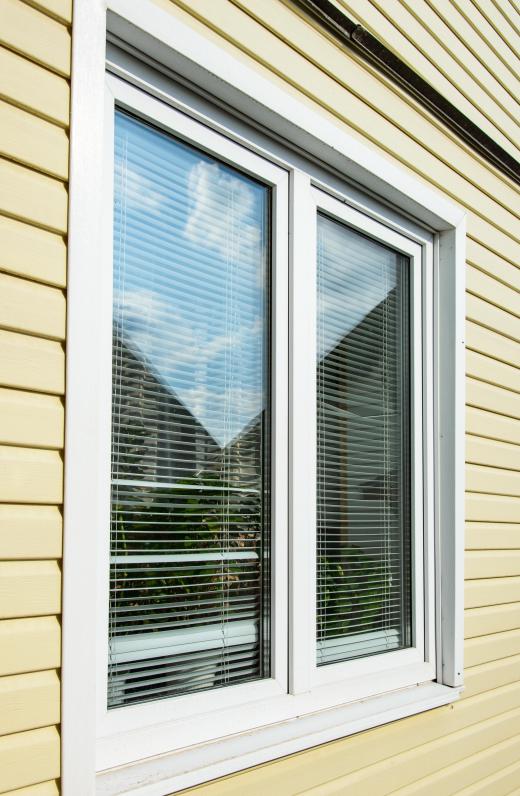Safety glass is a type of glass that is designed to resist breaking, and to break in a way that minimizes the risk of injuries in the event that the glass cannot withstand the forces exerted on it. Car windows are classically made from this type of glass to promote safety in collisions, and it can also be used in regular house windows, eyeglasses, laboratory glassware, and a wide variety of other products. As its name would seem to imply, it is meant to be safer than ordinary glass.
There are two ways in which safety glass can work: tempering or laminating. Tempered glass is made by treating the glass very carefully as it is heated and cooled to increase its tensile strength, making it hard to break. If tempered glass does break, it snaps apart into rounded chunks, rather than breaking up into jagged pieces that could potentially be very dangerous. People who have seen a broken side window in a car have probably seen an example of this type of glass.

Laminated safety glass is made by sandwiching a sheet of polyvinyl butyral (PVB) in between two pieces of glass. The glass is stronger because of the layering and reinforcement, and when it does break, the plastic essentially acts like tape, holding the pieces in place instead of allowing the sharp shards to fall. This type of glass is commonly used in car windshields, explaining the spiderweb effect of cracked glass that occurs when an object slams into one.

The primary purpose of this glass is making a task safer by protecting people from sharp glass shards that can cause severe injuries or even death, magnifying an accident into a medical emergency. Before the development of safety glass, people who went through plate glass windows and windshields did not always live, and if they did, they were often seriously injured; severe scarring and amputations as a result of such accidents were not uncommon.

This type of glass is also designed to be stronger than conventional glass, reducing the risk of it breaking in the first place by being tougher than ordinary glass. Tempered glass can handle rapid shifts in temperature along with severe impacts, and laminated glass is capable of withstanding heavy impacts as well. Laminated products have another advantage: if a person or object collides with it, the glass will not give way, keeping the object contained. In the case of a car, this prevents people from being ejected through the windshield in an accident, and in things like plate glass windows, laminated glass can keep people and objects from falling out of a building.
Ever since she began contributing to the site several years ago, Mary has embraced the exciting challenge of being a About Mechanics researcher and writer. Mary has a liberal arts degree from Goddard College and spends her free time reading, cooking, and exploring the great outdoors.

